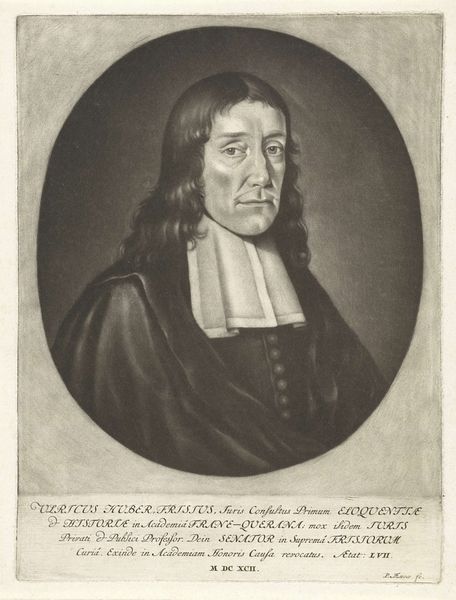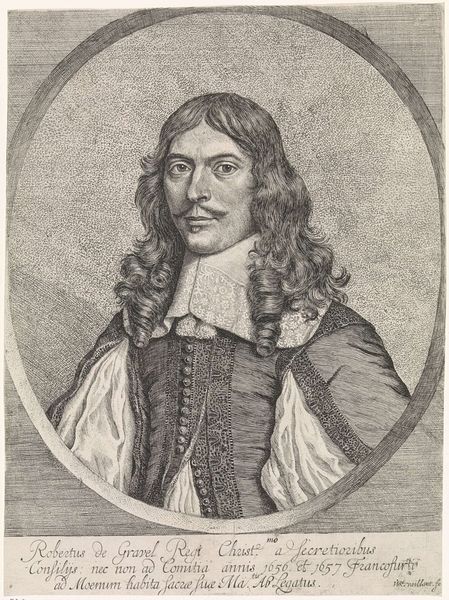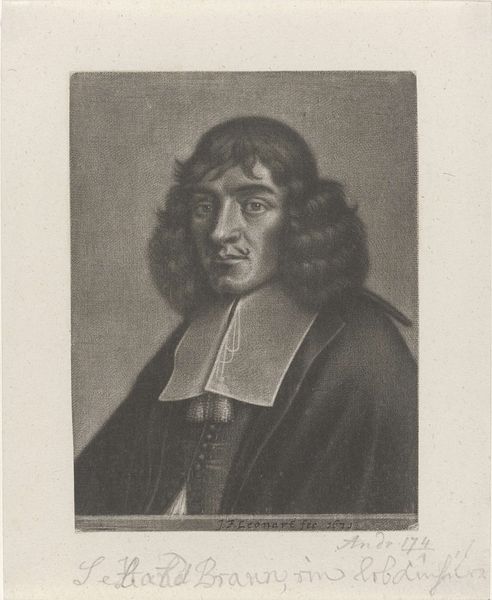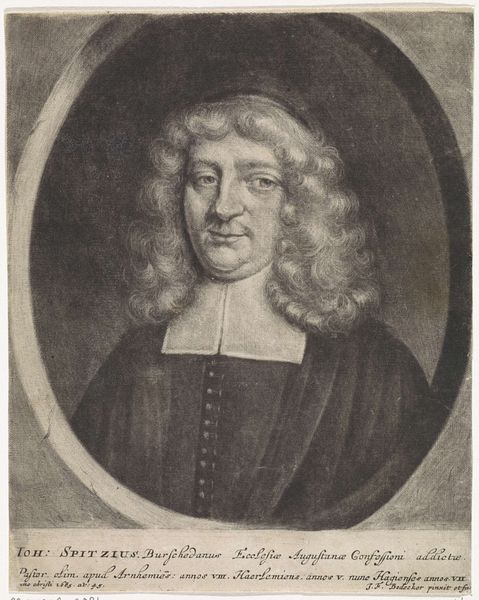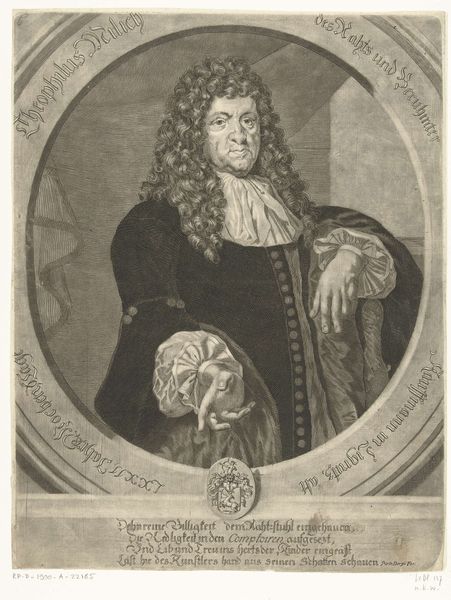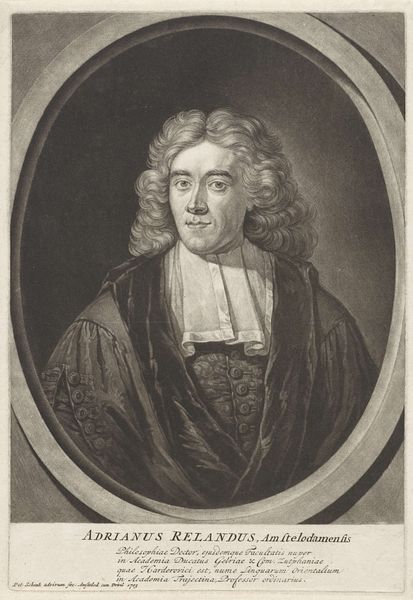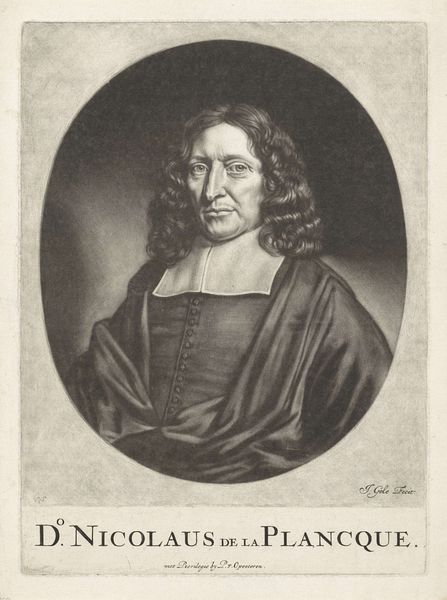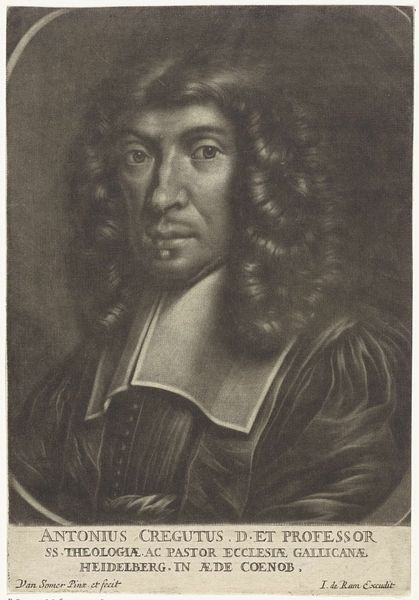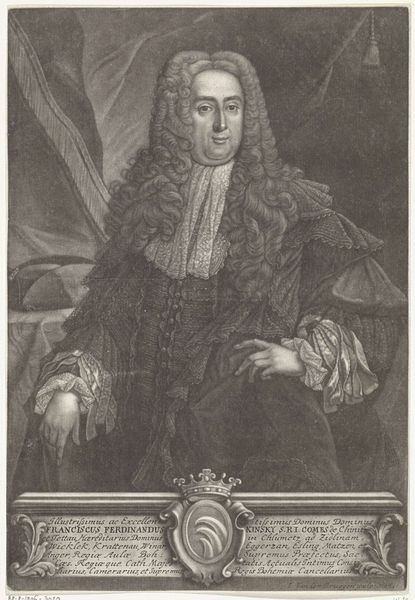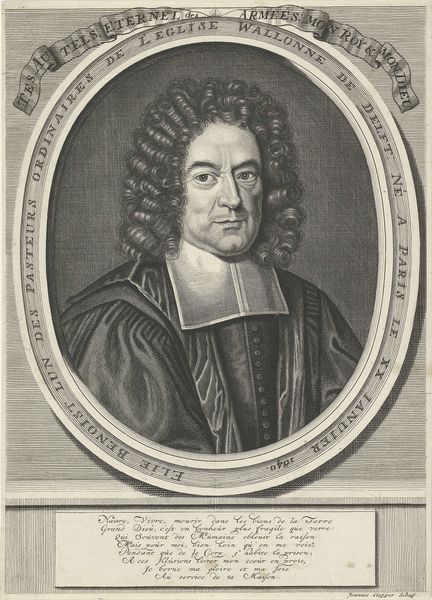
ink, engraving
#
portrait
#
baroque
#
portrait image
#
historical photography
#
ink
#
engraving
Dimensions: height 275 mm, width 210 mm
Copyright: Rijks Museum: Open Domain
Curator: Standing before us is "Portret van Herman Alexander Röell," an engraving rendered in ink, dating from approximately 1680 to 1700, and produced by Petrus Aeneae. Editor: My initial sense is of formality, austerity almost. The tonal range is subtle, almost monochromatic, creating a somber mood despite the flourishes in the inscription below. The oval frame concentrates the gaze on the figure. Curator: The very fact it's rendered as an engraving is significant. Engravings, with their capacity for detail and reproducibility, were powerful tools for disseminating images of important figures, establishing visual legacies. Röell, a theologian and philosopher, is immortalized here, reinforcing his intellectual authority for generations. Editor: The linearity achieved with engraving is quite remarkable. Notice how the dense network of fine lines models the forms and textures. The tight curls of his hair, the smooth expanse of his face, the folds in his clerical robes—all are differentiated through controlled variations in line weight and density. It is meticulous! Curator: Absolutely. Röell’s austere, almost detached expression also serves a function. It reflects the prevailing cultural values associated with intellectualism and religious piety—values his community and posterity would hold. A calculated neutrality. It's a public performance. Editor: I’m particularly drawn to the text at the bottom. The calligraphy creates a decorative base to the image with calligraphic swirls reinforcing the vertical stability of the oval containing the image. There is almost an anthropomorphic balance; the image mirroring the importance and stability inherent in knowledge itself. Curator: Consider Röell’s attire, particularly the stark white collar. Beyond its functional purpose as clerical garb, white often embodies purity, enlightenment, even divine grace. It connects the earthly and spiritual. That connection was incredibly powerful to Baroque audiences. Editor: It brings out Röell’s face, it really works, a bright spot that commands the gaze and anchors the composition. A powerful connection. Curator: This piece allows us a view of the deliberate crafting of identity through images in a specific time. The weight and value, how powerful such pieces might be in establishing long standing public figures in collective cultural memory. Editor: A powerful testament to how line and form can solidify cultural perception over centuries. An intersection of graphic elegance and formidable ideas.
Comments
No comments
Be the first to comment and join the conversation on the ultimate creative platform.
